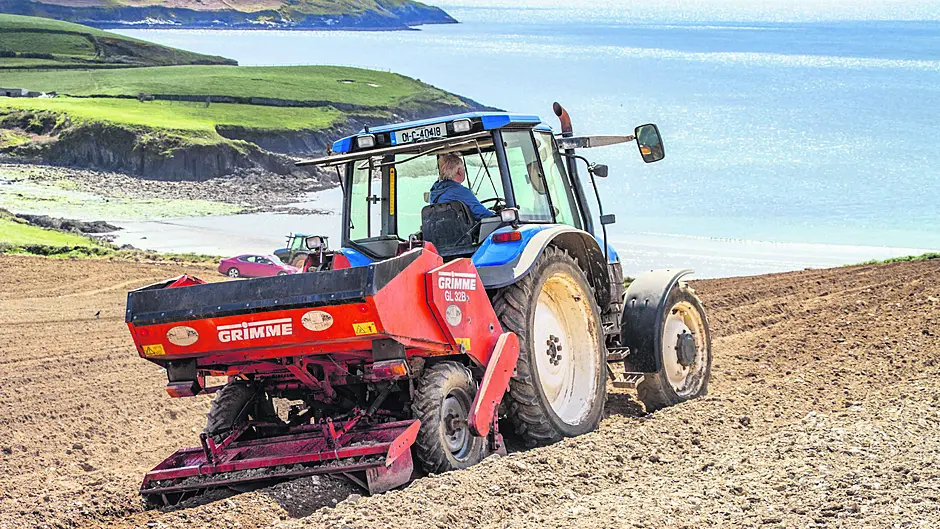A dairy exit and reduction compensation scheme was ruled out by the Minister for Agriculture but some farmers will still be thinking about the sector’s long-term future, writes TOMMY MOYLES.
THERE was a mixed reaction when the Minister for Agriculture Charlie McConalogue ruled out introducing any scheme to compensate dairy farmers to reduce the size of their herds.
An exit and reduction scheme was proposed as one of the recommendations aimed at reducing emissions from agriculture in the Food Vision Dairy Group’s report in October 2022.
The dairy landscape has changed significantly since it was initially floated in early 2022. That year saw record milk prices and a steep increase in input costs meaning it became a dream year for dairy farmers.
However, that changed as 2023 progressed.
Milk prices fell by record levels, input prices slipped and uncertainty over the nitrates derogation played on farmers’ minds.
As if that wasn’t enough, from July through to the end of March 2024, West Cork has experienced the equivalent of 12 months of rainfall in nine months.
Among the conditions proposed were that the voluntary scheme would be open to farmers to reduce completely or partially their breeding ruminant numbers in return for an appropriate incentive for a minimum number of years.
It also stipulated that there could be no breeding ruminants on that land for the duration of the contract and there would be conditions on leasing of the land.
That complexity, added to the fact that some of measures within the scheme were so debilitating to future farm income generation options, meant that the exit scheme was probably of more interest to those outside of farming rather than its intended target audience.
Taking the option of an exit and reduction scheme off the table has been criticised by some commentators.
But the reality on farms and from milk processors around the country shows that there has been contraction within the sector.
A combination of nitrates policy changes and fatigue at farm level are all factors. The mood music within the sector isn’t what it was in the heydays of 2022.
In reaction to changes to Ireland’s Nitrates Action Programme (NAP) that came into effect on January 1st, 2024, extra cows were culled as farmers attempted to comply with reduced organic N/ha limits.
Milk supply dropped across most milk processers and that trend has continued into this year. To the end of March, milk volumes supplied are back anywhere from 3% to 9%.
What the proposed exit and reduction scheme did in effect do was to pull the handbrake up on dairy dispersal sales in late 2022 and early 2023.
Moving late into last year, there was a slight increase in the number of herds being sold with some of these having deferred their decision to sell until further clarity on the exit scheme was available.
In his position as Bandon mart manager, Sean Dennehy is in a good position to gauge the mood of those looking to exit the sector.
‘I don’t think the dairy reduction scheme was high on the agenda with many people. Farmers will generally leave dairy production for their own reasons. Age profile or the workload would be the main reasons people leave with age the bigger one, especially if there is no one willing to take over the farm.
‘We’re seeing a small bit more dispersal sales than normal this year but what we’re seeing more of is farmers selling surplus cows and that’s been happening since last autumn.’ After a challenging 2023 followed by an extremely wet spring this year, Sean feels that more farmers could consider selling.
‘Some farmers won’t go through the breeding season again, so they’ll milk on for the year and either fatten all the cows and sell through dry cow ring or the factory. Those with an interest in breeding and that are milk recording might breed them again and sell next spring as a dispersal sale. Those breeding decisions will be made in the next few weeks so we’ll see how that plays out.’
Rather than an exit scheme, Sean felt that policy makers need to take a look at the future of agriculture.
‘Policy makers would really want to start sitting up and think about where food is going to come from. Thats on the back of the age profile, I think that is the big thing going forward.
‘There has to be a sustainable income on farms for multiple generations because if there isn’t it will cause a fall off in the number of farmers. That’s difficult at the moment so there needs to be incentives to encourage people to stay farming.’
Exit scheme proposed in 2022
A dairy exit scheme was mooted following the report of the Food Vision Dairy Group.
The Food Vision Dairy Group was established by the Minister for Agriculture at the end of January 2022.
The membership comprised representatives from the farm organisations, the co-op and dairy processing sector, State agencies, and department officials.
The remit of the Food Vision Dairy Group was to identify measures that the dairy sector can take to contribute to ‘initially stabilising and then reducing emissions’ from the agricultural sector.
It recommended the dairy exit scheme which the government looked set to pursue but has now been ditched.








